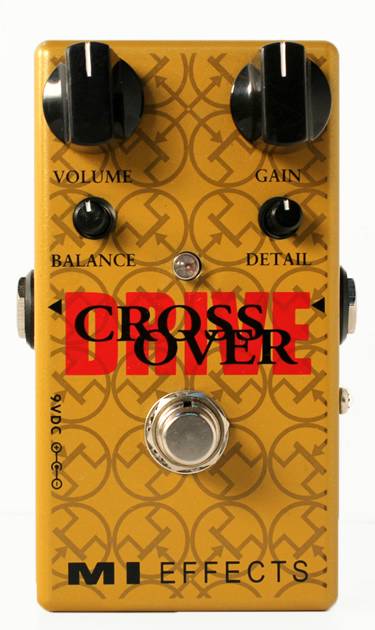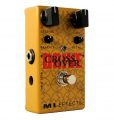- New products
- Second Hand
- Special offers
- Leadmusic Exclusives
- Electric Guitars (148)
- Effect Pedals and Multi Effects (264)
- Guitar Amplifiers (75)
- Basses (30)
- Bass Amplifiers (22)
- VacuumTubes for Amplifiers (12)
- Acoustic Instruments (77)
- Accessories (62)
- Computer & Software / PA-Equipment & Microphone (55)
- Vintage & rare instruments (59)
- ADA
- AKG
- Altman Guitars
- Amistar resophonic
- Anasounds
- Bacci Guitars and Basses
- Beyerdynamic
- Boss
- Bourgeois
- Charvel
- Collings
- Cordial
- D’Addario
- Darkglass Electronics
- DB-11 Decibel Eleven
- DR Strings
- Dunable Guitars
- EBow
- Eich Amplification
- Electro-Harmonix
- Elixir
- Elmwood
- Elrick Bass Guitars
- Empress
- Epiphone
- Ernie Ball
- EVH
- Fender Guitars
- Finger Ease
- Framus
- George L’s cables
- GFI System
- Gibson
- GigRig
- Gretsch Guitars
- Greuter Pedals
- Gruvgear
- Harvest
- HeadRush FX
- Ibanez
- IK Multimedia
- ISP Technologies
- Jackson
- Jacques Stompboxes
- Jetslide Guitar Slides
- Karol Guitars
- Kemper Amps
- Kernom
- König&Meyer ( K&M )
- Le Pape Steelguitars
- Lehle
- Leho Ukulele
- Line 6
- Lowden
- Manson Guitar Works
- Markbass
- Marshall
- Martin Guitars
- Maurice Dupont
- MI Audio Effects
- Mission Engineering
- Modtone Effects
- Mono case
- Mullard
- MXR
- Neural DSP
- Oasis
- Peterson Tuners
- Pre-War Guitars
- Preston Thompson Guitars
- PRS Guitars
- Radial
- Raven Straps
- RMC
- Ruokangas Guitars
- Sabolovic
- Sandberg Guitars
- Santa Cruz
- Schertler
- Sho-Bud Pedal Steel Guitars
- Shure
- Squier
- Sterling by Music Man
- String Swing
- Strymon
- Suhr Guitars
- Super-Vee
- Sustainiac
- T-REX
- Taylor Guitars
- TC Electronic
- Tech 21
- Terry Rogers Guitars
- Tom Anderson
- Truetone
- Tung Sol
- Two Notes
- Victory Amplification
- Visual Sound
- Vovox
- William King
- Xotic Effects
- ZOOM
The backbone of the Cross Over Drive are four discontinued FET transistors designed to capture the response and touch-sensitivity of an amp’s organic overdrive. But making a FET stage behave like a particular tube stage is actually a very complex affair and is not a simple substitute like most other FET-based preamp circuits. Our experience in designing valve amplifiers at MI Audio has seen us obsess over every minute detail of the Cross Over Drive’s circuit from operating points, dynamic range, scaling of clipping thresholds, output impedances, intrinsic capacitances due to the Miller Effect… you get the idea! This obsession has led to an original pedal design like no other that becomes a natural extension of your guitar, amp and playing style.
The most coveted guitar tones are those where the guitar, player and amplifier work as one. Every attack on the guitar string, be it by plectrum or finger pick, legato to down-stroke, neck or bridge pickup –all provide a different tone and feel that traditional overdrive pedals can struggle to capture. This response has been the driving force behind the design of the Cross Over Drive and this attention to detail is what sets it apart from the pack.
Another wonderful aspect of the design is just how well the Cross Over Drive reacts to both pick attack and changed in guitar volume. I know that this expression has become somewhat of a throw-away tag applied to virtually every drive pedal, but I feel that this genuinely applies in th
is case. Even with the gain cranked all the way up, a slight reduction of the guitar’s volume in combination with a lighter pick attack will produced a wonderful clean tone. This really something quite special, and will be particularly rewarding for expressive guitarists who play with a wide dynamic range.
The gain control is used to control the amount of saturation,as well as the tone and feel of the cross over drive. The unique gain control adjusts the gain in two parts of the circuit,which means that there is a wide range of lower gain sounds,and then towards the end of the gain sweep, the saturation really piles on. There are three distinct ranges:
1) 0% to 40% Boost/light breakup. In this range, you can use the Cross Over Drive as a boost pedal (by cranking the output volume), or for light breakup. The exact setting of the drive control will depend on how hot your pickups are. Low output single coil pickups will stay clean in this range,
whereas high output humbuckers will break-up almost immediately when hit hard. By adjusting the Balance and Detail controls, you’ll be able to use the Cross Over Drive as a JFET based tonal enhancer.
2) 40% to 70% Smooth, touch-sensitive overdrive. In this range, the Cross Over Drive will behave like a smooth (dare I say ‘D-style’) amp-like overdrive. It will retain the tone of each guitar, but will also respond very dynamically to pick attack, producing anything from a delicate clean to a wild
roar, all by varying the pick attack.
3) 70% to 100% Smooth Fuzz. With the gain in this range, the Cross Over Drive will take on an almost fuzz-like persona, especially with the neck pickup. Once again, by adjusting your pick attack and guitar volume, you can still go from clean, to overdrive to fuzz.
The backbone of the Cross Over Drive are four discontinued FET transistors designed to capture the response and touch-sensitivity of an amp’s organic overdrive. But making a FET stage behave like a particular tube stage is actually a very complex affair and is not a simple substitute like most other FET-based preamp circuits. Our experience in designing valve amplifiers at MI Audio has seen us obsess over every minute detail of the Cross Over Drive’s circuit from operating points, dynamic range, scaling of clipping thresholds, output impedances, intrinsic capacitances due to the Miller Effect… you get the idea! This obsession has led to an original pedal design like no other that becomes a natural extension of your guitar, amp and playing style.
The most coveted guitar tones are those where the guitar, player and amplifier work as one. Every attack on the guitar string, be it by plectrum or finger pick, legato to down-stroke, neck or bridge pickup –all provide a different tone and feel that traditional overdrive pedals can struggle to capture. This response has been the driving force behind the design of the Cross Over Drive and this attention to detail is what sets it apart from the pack.
– See more at: http://miaudio.com/effects/cross-over-drive/#sthash.XAB1Gd8R.dpuf
The backbone of the Cross Over Drive are four discontinued FET transistors designed to capture the response and touch-sensitivity of an amp’s organic overdrive. But making a FET stage behave like a particular tube stage is actually a very complex affair and is not a simple substitute like most other FET-based preamp circuits. Our experience in designing valve amplifiers at MI Audio has seen us obsess over every minute detail of the Cross Over Drive’s circuit from operating points, dynamic range, scaling of clipping thresholds, output impedances, intrinsic capacitances due to the Miller Effect… you get the idea! This obsession has led to an original pedal design like no other that becomes a natural extension of your guitar, amp and playing style.
The most coveted guitar tones are those where the guitar, player and amplifier work as one. Every attack on the guitar string, be it by plectrum or finger pick, legato to down-stroke, neck or bridge pickup –all provide a different tone and feel that traditional overdrive pedals can struggle to capture. This response has been the driving force behind the design of the Cross Over Drive and this attention to detail is what sets it apart from the pack.
– See more at: http://miaudio.com/effects/cross-over-drive/#sthash.XAB1Gd8R.dpuf
Specifications:
* 4 Pure A-Class J-FET.
* Dynamic Clean Boost, Overdrive & Fuzz
* unique Detail & Balance controls
* True Bypass
Videos:




